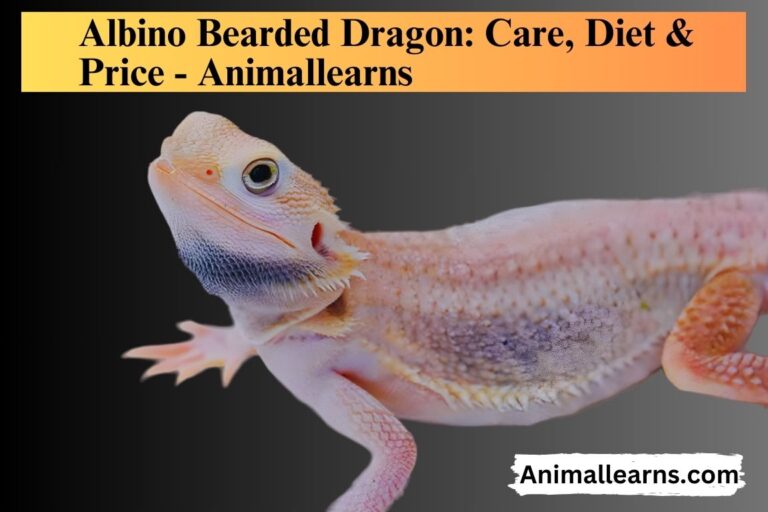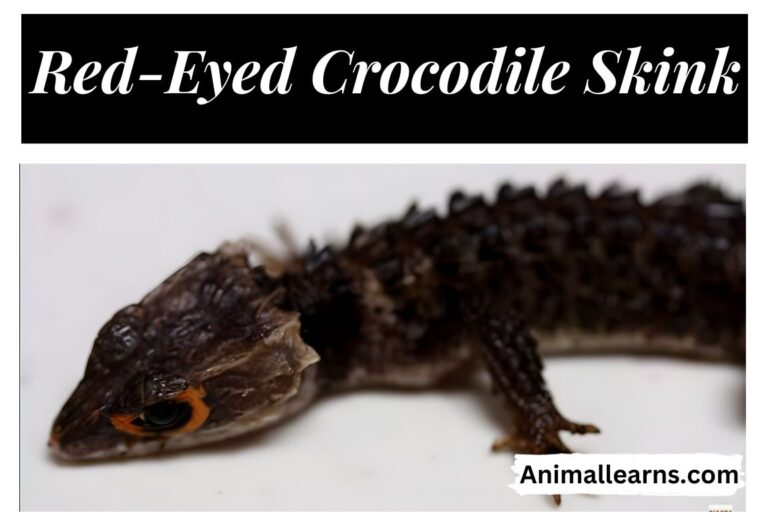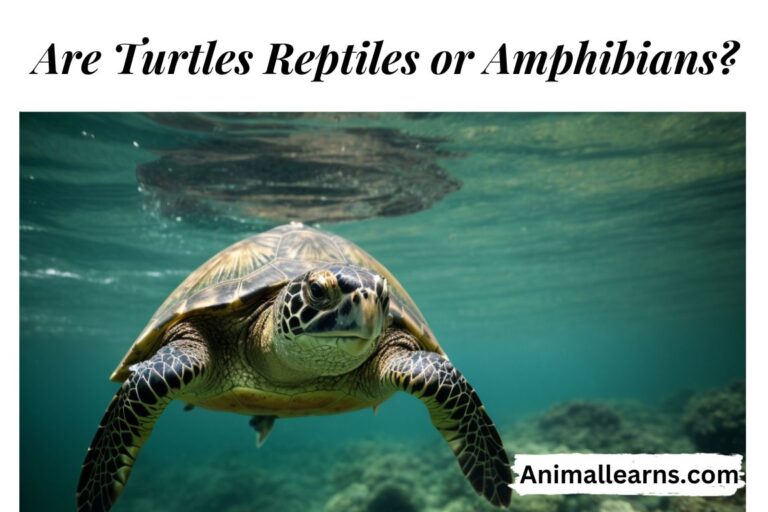Banana Ball Python: Facts, Care, Diet, Price – Animallearns
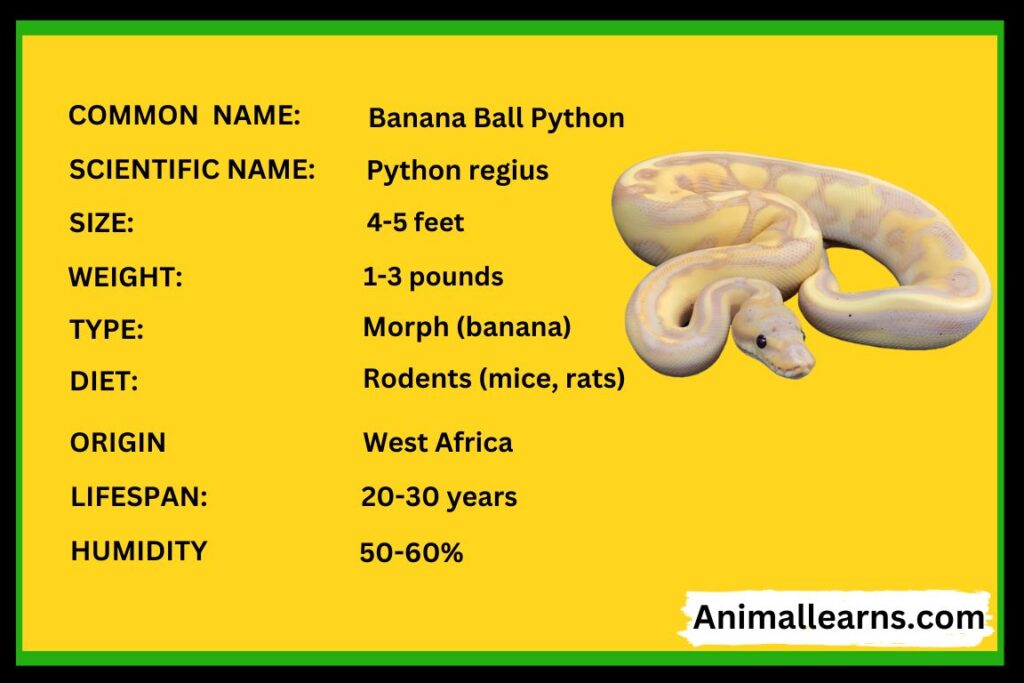
Breeders have been captivated by the Banana ball python for a long time because of its complex breeding ratios that affect the sex of its progeny. It is a fascinating morph in the reptile world.
There are more than 4,000 different varieties of ball pythons, which are popular among snake lovers and breeders. Since its introduction in 2003, the brilliant yellow banana ball python has become more and more well-known.
Because of a co-dominant genetic expression, they have vivid coloring, yet they may be mated consistently without posing a serious risk to their health or raising worries about inbreeding.
Their dark and bright yellow colors may not help them blend in, but their kind dispositions make them valued cold-blooded friends. After being found in West Africa in the late 1990s, American breeders developed a keen interest in these peculiar-looking ball pythons, which at first had a yellowish-orange base coloring.
Years of meticulous breeding eventually proved that these morphs were real and inheritable. They are well-known for their vibrant colors and placid demeanor.
They are also becoming more and more well-liked since they are a great option for novice or experienced snake fans due to their low maintenance requirements.
Super Banana Ball Python
Contents
- 1 Super Banana Ball Python
- 2 Appearance
- 3 Behavior & Temperament
- 4 Lifespan
- 5 Diet
- 6 Amazing Banana Ball Python Facts
- 7 Banana Ball Python Baby vs. Adult
- 8 Banana Ball Python Price
- 9 Health Issues
- 10 Caring For a Banana Ball Python
- 11 Where to Find Them
- 12 Population
- 13 Popular Banana Ball Python Combinations
- 14 Banana Ball Python Variations
- 15 How Dangerous Are They?
- 16 Genetics and Pattern of Inheritance
- 17 Potential Issues: Male-Maker and Female-Maker Banana Balls
- 18 Breeding
- 19 Conclusion
- 20 FAQs
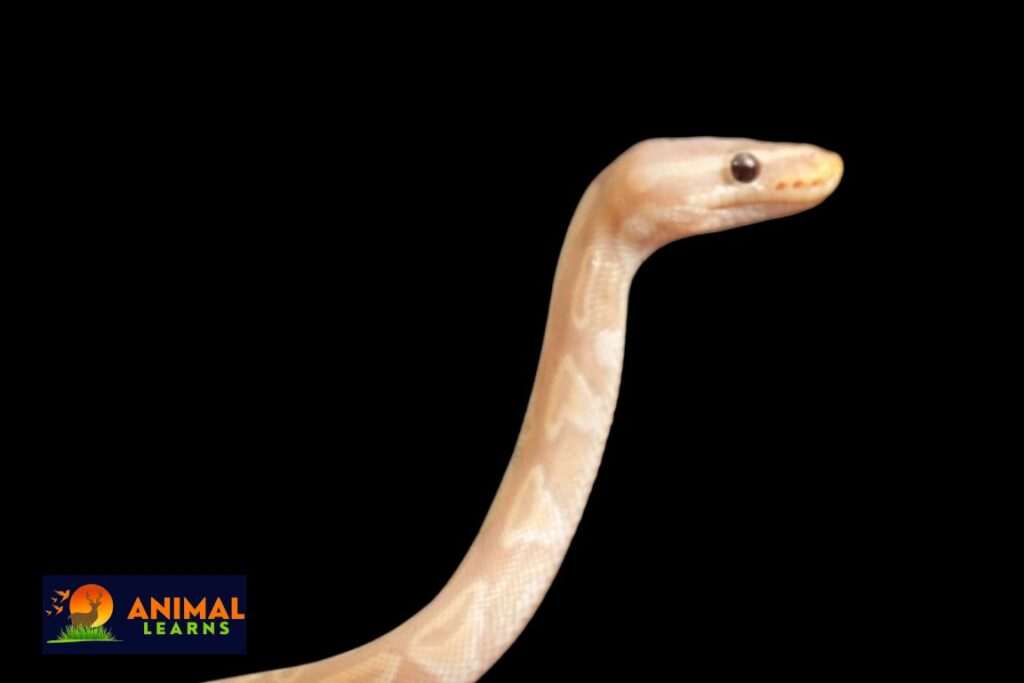
A ball python with two copies of the banana gene is known as a super ball python. As a result, the snake will display the banana morph more than a ball python with a single copy of the gene.
Super banana ball pythons usually have more shades of white and yellow, giving them a paler overall color. Additionally, its pattern could be more well-defined, and the contrast between the light and dark sections stronger.
Super banana ball pythons may be quite costly and are not commonly found. Nonetheless, because of their remarkable look, reptile lovers greatly prize them.
Appearance
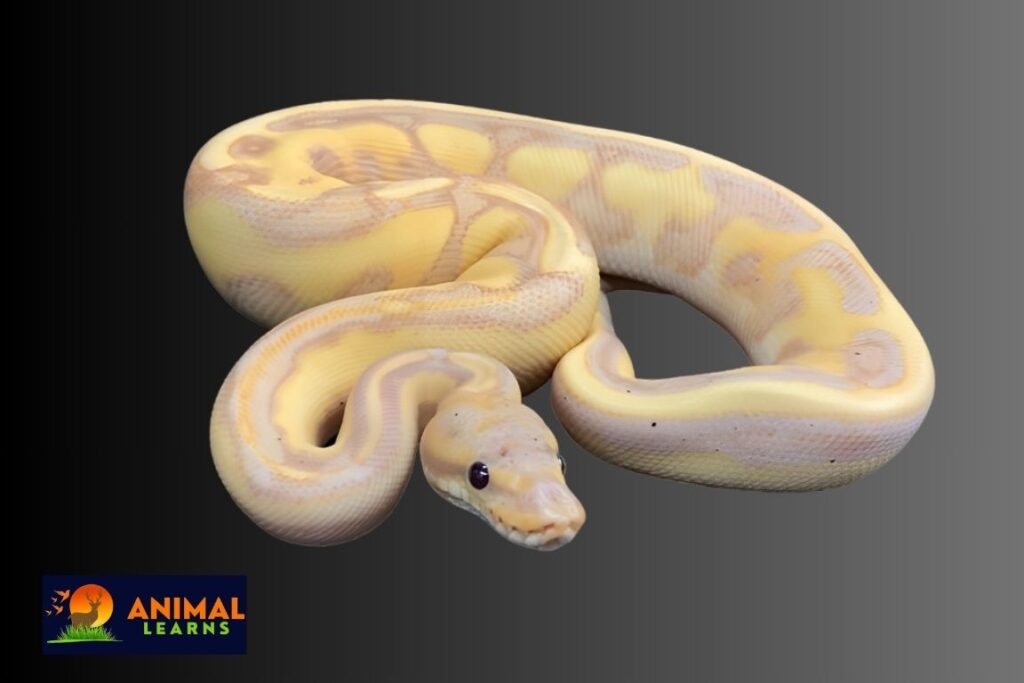
Popular ball pythons are called banana ball-pythons because of their eye-catching yellow coloring. They are medium-sized snakes that may grow to be three to five feet long. They have a blunt nose and a trapezoidal skull on robust, muscular bodies. They feature various colors and patterns on their glossy, smooth scales.
The vivid yellow patterns on banana pythons are their most characteristic trait. The hue of these marks might range from a light yellow to a deep orange. Usually, they show up as blotches or patches dispersed across the snake’s body.
The snake’s remaining body color might vary from a light tan to a dark brown. Additionally, some ball pythons have black patterns that might run the length of the snake’s body or border the yellow dots.
Other physical traits of ball-pythons include the following:
- Head: They have blunt snouts and triangular-shaped heads.
- Eyes: Their eyes feature circular pupils and are tiny in size.
- Mouth: They have big, partially opened jaws that can accommodate a lot of prey.
- Scales: They have shiny, smooth scales.
- Tail: Because of their short, prehensile tails, they can hold onto items.
Behavior & Temperament
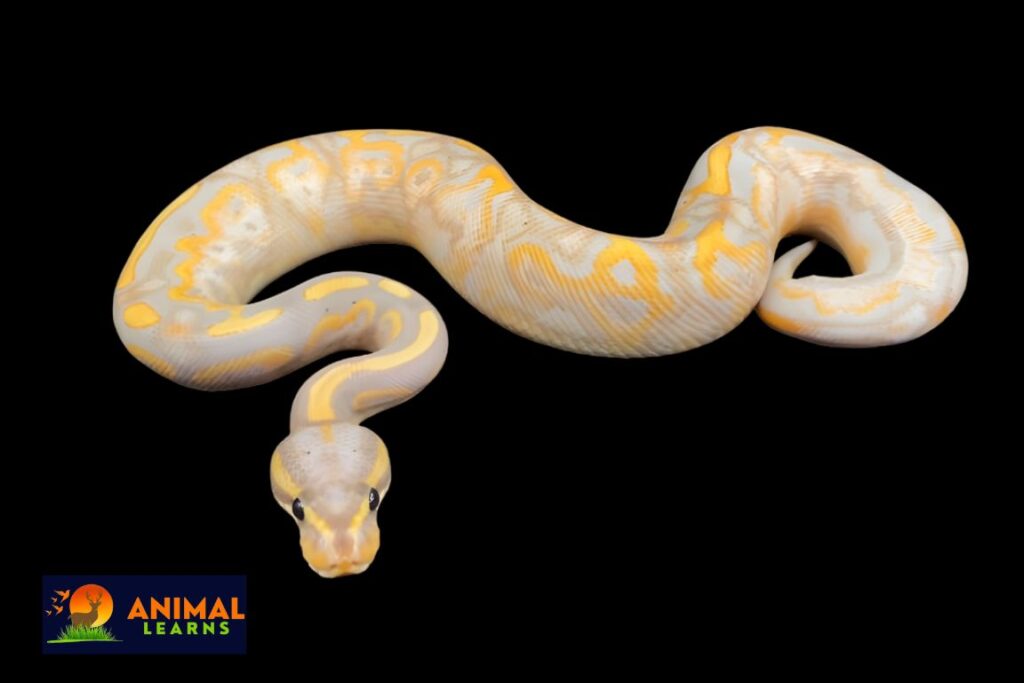
Because these are so kind, they are appropriate for all kinds of reptile owners, regardless of experience level. They normally perform well with frequent engagement sessions a few times a week, however, too much handling might tire them out.
It is advisable to avoid housing or handling them in high-traffic parts of your home, though, since they tend to spook quickly.
Ball pythons can be seen throughout the day to bask, bathe, or feed, but they are usually more active at night. Being non-venomous constrictors, they would rather suffocate their victim than bite it.
Don’t freak out if your python bites the prey or you in place of the prey. Rather, bide your time till your python releases.
However, your banana python is more likely to ball up into a tight ball with their head in the middle if they are terrified. They could hiss at you as well. Their characteristic defensive technique is this one. This is a sign of tension or fear if your snake exhibits it.
Lifespan
This reptile may live for 20 to 30 years, but they can live longer with the right care. The oldest banana ball snake ever recorded was 62 years old.
Diet
As carnivores, rats and mice make up the majority of the food of banana ball snakes. They also consume tiny birds and reptiles in the wild.
You should only feed your ball python prey that is no bigger than the broadest portion of its body. Additionally, you should feed your snake live or previously killed prey.
Depending on its size and age, your ball python will require different feeding schedules. It is recommended to feed hatchlings every 5-7 days, and juveniles every 7-10 days. You can feed adult ball pythons every 10–14 days.
Amazing Banana Ball Python Facts
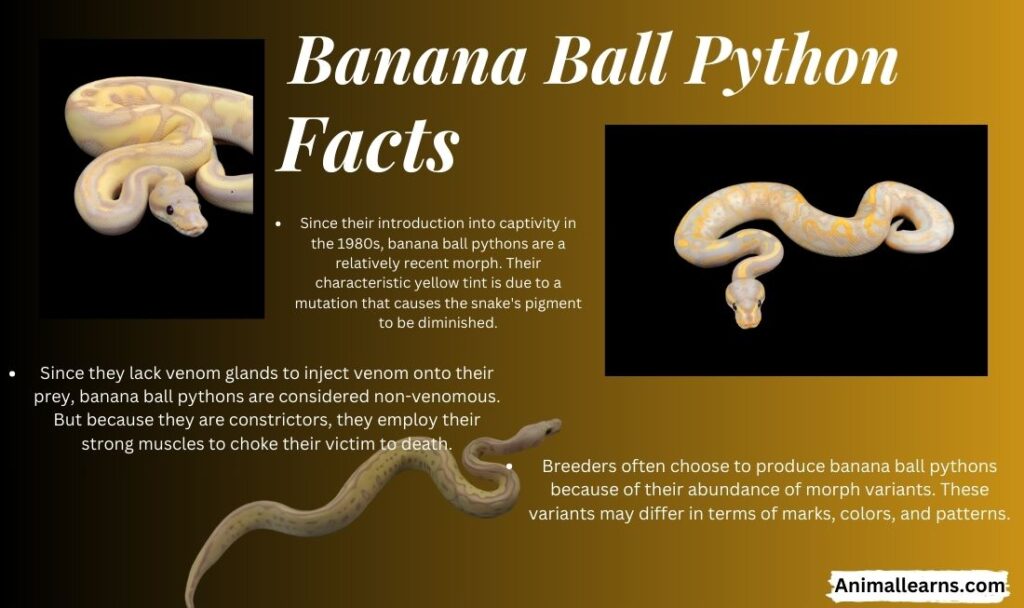
- Since their introduction into captivity in the 1980s, they are a relatively recent morph. Their characteristic yellow tint is due to a mutation that causes the snake’s pigment to be diminished.
- Since they lack venom glands to inject venom onto their prey, they are considered non-venomous. But because they are constrictors, they employ their strong muscles to choke their victim to death.
- Breeders often choose to produce banana-ball pythons because of their abundance of morph variants. These variants may differ in terms of marks, colors, and patterns.
Banana Ball Python Baby vs. Adult
| Feature | Baby Banana Ball Python | Adult Banana Ball Python |
| Size | Typically 8-12 inches long | Typically 3-5 feet long |
| Weight | Typically 20-50 grams | Typically 2-5 pounds |
| Coloration | Typically have brighter, more vibrant colors | Colors may fade or darken with age |
| Pattern | Typically have more defined patterns | Patterns may become less defined with age |
| Feeding | Should be fed every 5-7 days | Should be fed every 10-14 days |
| Temperament | Typically more skittish and active | Typically more docile and less active |
Banana Ball Python Price
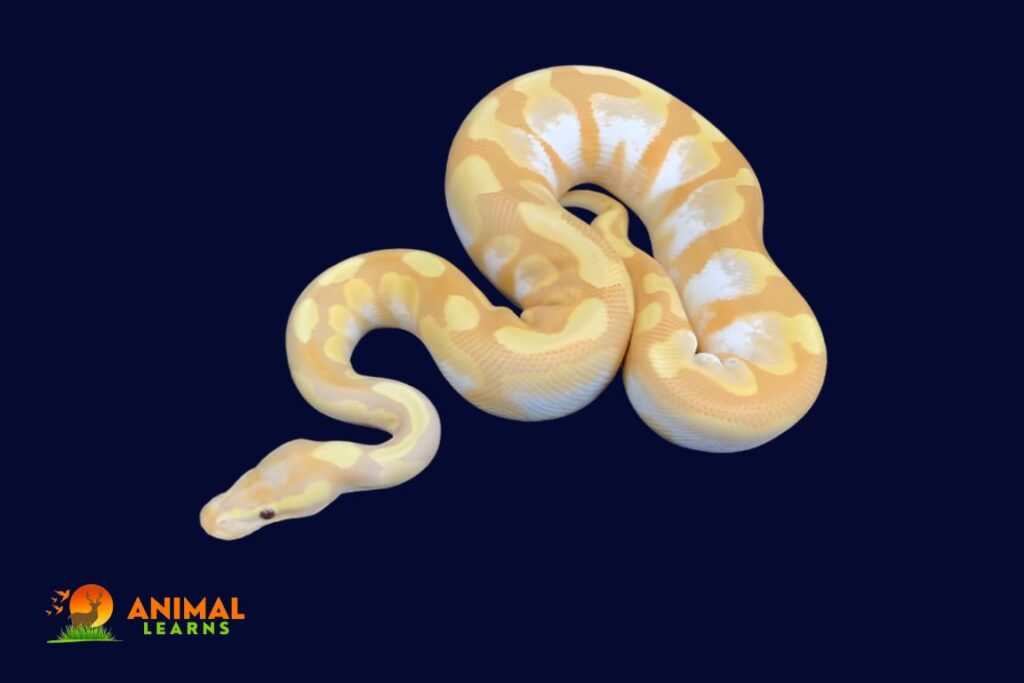
A banana-ball python’s cost might differ based on several elements, including its age, gender, genetic characteristics, and the reputation of the breeder. However, the price range for this snake is likely to be between $150 and $3,000.
| Age | Average Price |
| Hatchling | $150 – $500 |
| Juvenile | $500 – $1,000 |
| Adult | $1,000 – $3,000 |
Health Issues
Inadequate husbandry is the leading cause of sickness in banana ball-pythons. Your snake might be vulnerable to the following health issues if you don’t provide them the necessary care or maintain a clean enclosure:
- Skin Infections/ Mites
- Mouth Rot
- Anorexia/ Weight Problems
- Infections of the respiratory system
If you bought a morph variation, such as a cinnamon ball snake , you should also be aware of the following genetic issues:
- Kinking
- Wobble
- Duckbill
If your snake is having difficulty breathing or eating, scratching its head or body often, or has white material around its mouth or nostrils, call your veterinarian right away.
You can ensure your python’s happiness and health with strict enclosure upkeep and preventative treatment, such as routine veterinary appointments.
Caring For a Banana Ball Python
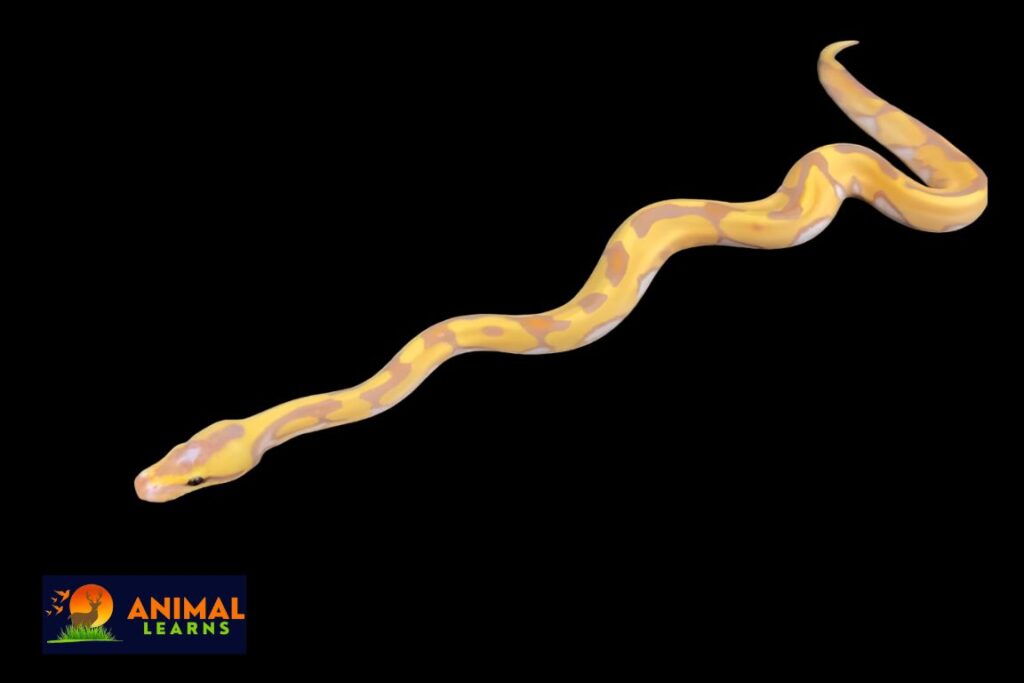
With a little bit of maintenance, your banana ball should bring you years of vibrant company. They will require enough room, a temperature gradient between 75° and 95°, a cozy hiding place, hygienic living circumstances, and frequent access to fresh water, much like the majority of ball pythons.
They are usually submissive. As long as everyone handles the snake carefully, you may take them outside to show your friends without worrying about getting bitten. (And you’ll want to flaunt them when you possess something this gorgeous)!
They may survive for 20 to 30 years if given the right care. Although they are comparatively low-maintenance pets, they do need some basic attention. This entails giving them a suitable cage, controlling the humidity and temperature, feeding them a balanced meal, and petting them frequently.
Where to Find Them
The first banana ball python was not even developed in captivity until 2006; the brilliant hue of the banana ball python was only accomplished by extensive experimentation mating together several colored morphs of the ball python.
Members of the same banana-colored species are much rarer in the wild, though not unheard of. Despite this, other than their unique colors, these ball python varieties aren’t really any different from other pythons in the wild in terms of functionality.
Historically, ball pythons have been a component of the tropical Sub-Saharan ecology in West and Central Africa. Ball python habitats are found in Uganda, Sudan, Ghana, Senegal, Cameroon, and Chad. For ball python habitats, the Nile River acts as an approximate territorial boundary.
Population

This is a designer morph that was developed by breeders; it truly wouldn’t exist without human involvement. Adult bananas are not only common but they can also be purchased reasonably priced as they are one of the more well-liked morphs of a popular pet snake breed.
The IUCN Red List lists ball pythons as the least concern, and there is no tracking available for the population sizes of individual snake types. Ball pythons are poached for their skins and for the pet trade, yet their numbers may not be in danger right now. This is particularly valid for uncommon morphs.
Popular Banana Ball Python Combinations
Like other co-dominant mutations, the banana morph facilitates breeding. Furthermore, the Banana morph complements nearly every other morph due to its exquisite beauty. Among the most striking pairings are:
Banana x Spider
The combination of the Banana colors and the decreased pattern of the Spider may create an amazing snake. However, “Spider Wobble,” a neurological condition that affects many Spider balls, can also affect Banana Spider balls.
Banana x Pastel
Approximately equal amounts of normal, Banana, Pastel, and Banana Pastel offspring are produced when a Pastel and a Banana are crossed. Darker purples are seen in a Black Pastel Banana, while brighter oranges and yellows are found in a Cinnamon Pastel Banana.
Banana x Piebald
The Banana Piebald is incredibly distinctive, with white spots set against a backdrop of purple and orange.
Banana x Enchi
The colors of Enchi balls are more orange-tinted, with a lighter brown pattern. Banana Enchis substitutes a subdued burnt orange for the lavender motifs.
Banana x Pinstripe
This pattern’s fine lines on a banana ball resemble barren purple branches against a setting sun. Additionally, since pinstripes are co-dominant, your chances of getting at least one Banana Pinstripe are high.
Banana Ball Python Variations

There are presently over 20 different morph variations of this reptiles available. This is partly because of their lovely colors and easygoing disposition.
Some of the more popular varieties and their color patterns include:
- Banana Albino Ball Python
- Banana Clown Ball Python
- Banana Pastel Ball Python
- Banana Spider Ball Python
- Chocolate Banana Ball Python
- Banana Pied Ball Python
- Banana Mojave Ball Python
- Banana Enchi Ball Python
- Axanthic Banana Ball Python
- Cinnamon Banana Ball Python
How Dangerous Are They?
Since they are non-venomous constrictor snakes, people shouldn’t be afraid of them. They are normally quiet animals that hardly ever bite, and when they do, it’s usually not a big bite.
Their non-venomous saliva ensures that their bites do not result in any major medical issues, and their small mouths and weak jaws make it impossible for them to inflict deep wounds.
Genetics and Pattern of Inheritance

Recessive ball python variants are rather common. The child of a Piebald ball python and a regular ball will have one copy of the Piebald mutation but will otherwise look normal. Half Piebalds and Half Het Piebalds will result from the further breeding of those “het Piebald” snakes with a Piebald.
(Note: Each clutch may have a different real amount of normal and morph offspring. The percentages will converge on the mean when more breedings are conducted. However, a disproportionately high number of morph or non-morph offspring may result from any given coupling.)
Half of the progeny produced from a banana ball and a non-banana ball mating will be banana balls. The balls that make up the other half will be regular ones without the banana gene.
One-quarter of the progeny produced from a banana ball mating with another banana ball will have the normal gene from both parents. There will be half-balls of banana. And Super Bananas will make up 25%.
Super Bananas have fewer distinct patterns and a paler hue; some people compare them to permanent shed bananas. Despite not having the same visual appeal as bananas,
Super Bananas are made up of two mutations from bananas. Consequently, all of their progeny will be banana balls.
This is incredibly useful if you wish to create combinations of morphs. Half a clutch of bananas and half a clutch of banana spiders will result from breeding a super banana and a spider.
When a Piebald and a Super Banana are crossed, a clutch of Bananas het Piebald is born. When they breed with Piebalds, you should expect 25% of their kids to be Banana Piebalds.
The banana ball appears to be a snake breeder’s dream come true. But unforeseen realities frequently confuse even the most straightforward dreams.
Potential Issues: Male-Maker and Female-Maker Banana Balls
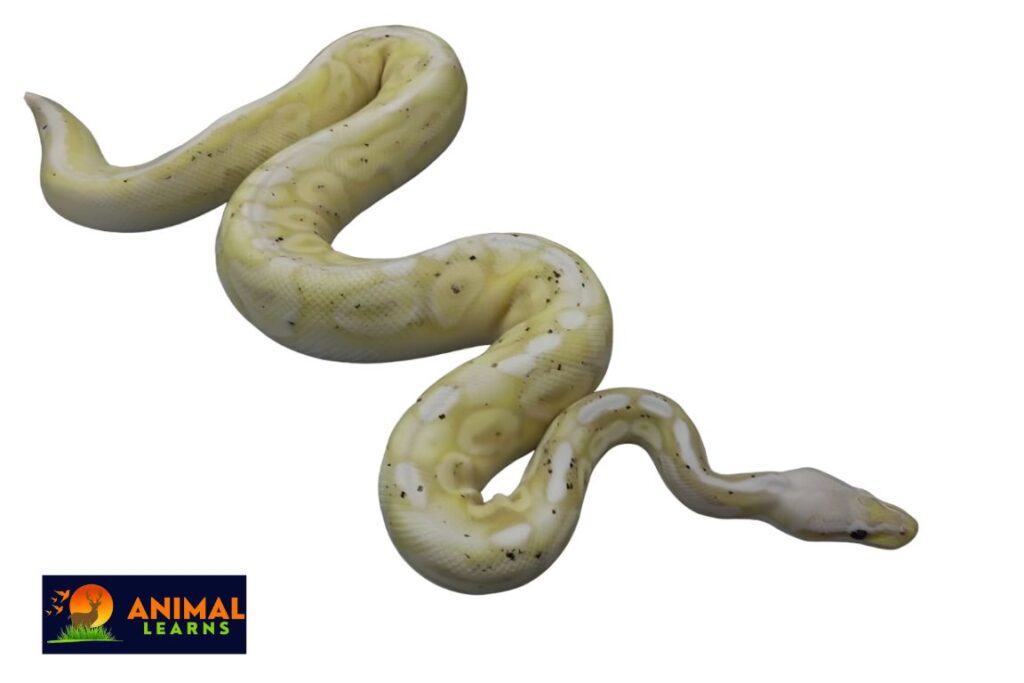
Male bananas sold for $60,000 in June 2011, while female banana balls ranged in price from $12,000 to $20,000. The breeders who made the initial investments in captive breeding discovered that few male bananas were being produced in comparison to the disproportionately high number of female bananas that were coming from their efforts.
Usually, both female and male bananas hatch from a female banana’s brood. Approximately 95% of the bananas produced by breeding those male bananas will be female! There will be 5% of male bananas generated by these “female maker” guys.
Ninety-five percent of their banana progeny will be male when they mate with a non-banana female ball. Additionally, the vast majority of male bananas will be produced by the progeny of this “male maker.”
Although a lot of ball python breeders have strong opinions about it, the specific mechanism of the banana mutation is unknown. We are confident that there is a sexual distribution disparity after years of breeding Banana balls.
Ask the vendor who the male banana was born to if you are adding him to your breeding collection. Your young snake is a female maker if his mother was a banana; if not, he will be a male maker.
If you are developing designer morphs, you could have certain ideas about what you want to breed in the future. It might be useful to be aware in advance that your bananas will lean significantly toward one gender over the other. Most Banana ball owners find the subject of who makes male or female balls to be merely fascinating.
Breeding
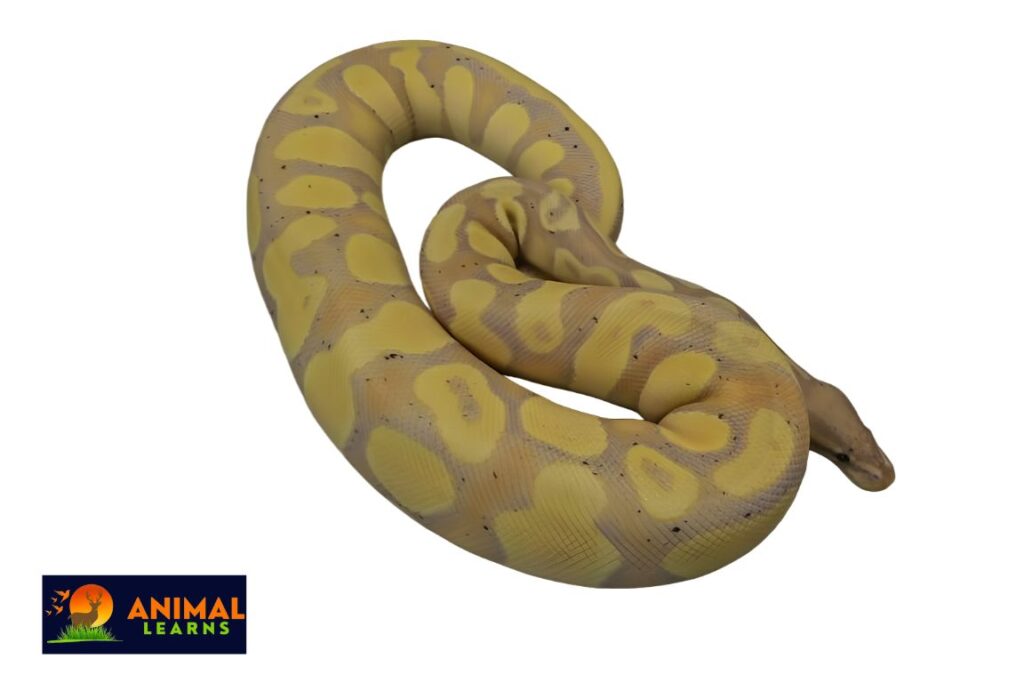
Breeding of these reptiles is more challenging, and banana ball pythons are no different.
Generally, a decrease in temperature and a shortage of food are what cause breeding to occur. These circumstances resemble the breeding season they would experience in the wild.
Increase the temperature to 86 to 88 degrees Fahrenheit with at least 60% humidity after the successful mating. This encourages the female to brood—that is, sit on her eggs.
Up to eleven eggs can be laid in a clutch by this reptile, and the eggs will adhere to one another for a few days before hatching.
All of the snakes have to be kept apart when they hatch. Hatchlings are lonely creatures even at such young ages, and they will not take well to living alongside their siblings.
Conclusion
For snake keepers looking to add a stunning yet reasonably priced morph to their collection of ball pythons, the Banana ball could be the perfect choice.
It’s simple to understand why the banana ball python and related types are so well-liked given their stunning color pattern and almost flawless disposition. They’re excellent for both novices and professionals. This is a low-maintenance and adaptable snake. This snake will undoubtedly be a mainstay in the market for many years to come given their easy availability for food.
FAQs
What is a banana ball python?
A non-venomous constrictor snake endemic to Central and West Africa is the banana ball python. They are distinguished by their vivid yellow hue and placid disposition.
How big do banana ball pythons get?
The average size of this snake is 3–5 feet long and 2–5 pounds in weight.
What is the diet of banana ball pythons?
As carnivores, they consume rodents like mice and rats. Prey shouldn’t be bigger than the snake’s broadest area of the body. It is recommended to feed hatchlings every 5-7 days, juveniles every 7-10 days, and adults every 10-14 days.
How long do banana ball pythons live?
With proper care, they can live for 20-30 years.
How do you care for a banana ball python?
Although they are very low-maintenance pets, they still need some basic care. This entails giving them a suitable cage, controlling the humidity and temperature, feeding them a balanced meal, and petting them frequently.








